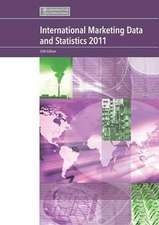End of the Line: The Rise and Coming Fall of the Global Corporation
Autor Barry C. Lynnen Limba Engleză Paperback – 31 iul 2006
End of the Line is the first real anatomy of globalization. It is the story of how American corporations created a global production system by exploding the traditional factory and casting the pieces to dozens of points around the world. It is the story of how free trade has made American citizens come to depend on the good will of people in very different nations, in very different regions of the world. It is a story of how executives and entrepreneurs at such companies as General Electric, Cisco, Dell, Microsoft, and Flextronics adapted their companies to a world in which America’s international policies were driven ever more by ideology rather than a focus on the long-term security and well-being of society.
Politicians have long claimed that free trade creates wealth and fosters global stability. Yet Lynn argues that the exact opposite may increasingly be true, as the resulting global system becomes ever more vulnerable to terrorism, war, and the vagaries of nature. From a lucid explanation of outsourcing’s true impact on American workers to an eye-opening analysis of the ideologies that shape free-market competition, Lynn charts a path between the extremes of left and right. He shows that globalization can be a great force for spreading prosperity and promoting peace—but only if we master its complexities and approach it in a way that protects and advances our national interest.
Preț: 108.09 lei
Nou
Puncte Express: 162
Preț estimativ în valută:
20.69€ • 22.46$ • 17.38£
20.69€ • 22.46$ • 17.38£
Carte disponibilă
Livrare economică 02-16 aprilie
Preluare comenzi: 021 569.72.76
Specificații
ISBN-13: 9780767915878
ISBN-10: 0767915879
Pagini: 312
Dimensiuni: 142 x 210 x 18 mm
Greutate: 0.26 kg
Editura: Broadway Business
ISBN-10: 0767915879
Pagini: 312
Dimensiuni: 142 x 210 x 18 mm
Greutate: 0.26 kg
Editura: Broadway Business
Notă biografică
Barry C. Lynn is a fellow at the New American Foundation in Washington, D.C. He has reported on business from around the world and served as the executive editor of Global Business magazine for seven years. His views have been sought by U.S. politicians as well as by the governments of France, Japan, India, and other nations. His work has been supported by the Rockefeller Foundation. He lives in Washington, D.C., with his wife and two children.
Extras
Chapter One
THE OLD WEST
Running from Japan
He had been called an “ax murderer,” a “hitman,” the “grand inquisitor.” But the first public appearance in America by the man tapped to save General Motors, Jose Ignacio Lopez de Arriortua, revealed an executive who knew exactly what his audience wanted to hear, and who seemed a little goofy besides. “We are in a war,” Lopez declared to an audience of GM executives and reporters in Saginaw, Michigan. The fight was “to save the auto industry and our lives,” to keep “our sons and daughters” from becoming “second-class citizens” in the global economy. “We must act. We must win. We cannot afford to lose.”(1)
It was August 1992, and America’s carmakers had for years longed for a savior in their battle against the Japanese. Lopez seemed the perfect man for the role. A native of Spain’s gnarly northern Basque region, the fifty-one-year-old Lopez was dark, wiry, electric, and he came to the job with a reputation as a visionary who could turn vicious. In a twelve-year career with GM in Europe, he had earned such nicknames as “Lopez the Terrible,” “Hurricane Lopez,” and “The Spaniard Who Makes the Germans Tremble.” And he had delivered, slashing the cost of the parts that went into General Motors’ European cars. Best of all, he bragged that he had improved on Japan’s vaunted and seemingly invulnerable manufacturing model, adding “scientific method” to Japanese “intuition.” Yet Lopez also exuded a quirky charm. In Saginaw, he told reporters that his role model was Mother Teresa, whom he called a “great service provider.” He explained that he and his staff had moved their watches from their left wrists to their right and that they planned to keep them there until GM reported “record profits.” The point, he said, was to feel “something like pain.”(2)
Financial pain was exactly what General Motors had been feeling for years. In 1991, the company had lost some $7 billion in North America, and the erosion of GM’s share of its home market was accelerating. The crisis had become so bad that GM had taken to acting out of character. The world’s largest corporation, the company had long been famous– and increasingly infamous–for the extreme deliberation with which top management made decisions. Yet in April, GM’s board had staged an unprecedented coup, abruptly dumping CEO Robert Stempel after less than two years on the job. In his place the board named Jack Smith, the head of GM’s European operations. And Smith came loaded with Lopez, who had been one of his key lieutenants in GM’s European headquarters in Zurich.(3)
Lopez took little time in making a name for himself in his newly created job as GM’s purchasing czar, mainly by forcing suppliers to cut their prices drastically if they wanted to keep GM’s business. Though he was virtually unknown in America when tapped for the job in April, by August BusinessWeek was able to write that “not since Ralph Nader has one man so shaken Detroit.” Autoworkers and suppliers quickly came to regard Lopez as more akin to the Grim Reaper, and the UAW quickly responded to Lopez’s all-out assault on suppliers with a nine-day strike in Lordstown, Ohio, which ultimately forced the shutting of seven big plants. The owners and managers of the supply fi rms seemed no happier, though they dared not criticize Lopez openly. Yet for many Americans, after years of bad news about the failings of the country’s manufacturers, Lopez seemed a welcome, even bracing, change. And he certainly made great copy.
However much he bragged of the rationality of his methods, Lopez also injected a rather pre-Enlightenment ethic into the climate-controlled corridors of General Motors. His procurement team, he said, was made up not of midmanagers but “warriors.” On-target bids by suppliers were welcomed not with congratulatory memos but loud shouts and pounding on tables. Lopez reminisced of his peasant upbringing, and claimed inspiration from his “namesake” St. Ignatius de Loyola, the founder of the Jesuits and a fellow Vizcayan. He arrived at work at 6:30 A.M., stayed ?fteen hours, worked weekends. To journalists, he lamented how much he missed his wife and three daughters, how he had lost weight since taking the job in Detroit. USA Today published a copy of his “Warrior Diet,” reporting that “its popularity is growing at General Motors.” The diet was designed to provide “maximum energy” for long days. “You may eat meat, seafood, cheese–whatever you like,” Lopez told the reporter. “But don’t combine them with vegetables or salad.”(4)
The Lopez regime seemed the perfect prescription for America in the early 1990s. In the popular imagination, American manufacturers had grown lazy and fat, and now an ascetic visionary had arrived to preach austerity. And he did it in a language Americans understood. Lopez seemed able to translate the secrets of Japanese-style manufacturing into America’s rougher culture. Japanese companies may boast about how they provide “lifetime employment” to their employees, who are treated as members of “teams,” who wear spotless uniforms, who gather in the morning for calisthenics. Lopez instead prescribed a good old-fashioned American-style cracking of the whip. And sometimes his methods came to seem like a Detroit-style gang rumble. As the sales manager for one supplier put it, Lopez “hits you over the head with a two-by-four and starts you bleeding.” But it was all for your own good. Once Lopez had captured your attention, the sales manager said, he then “helps you heal.” And Lopez also seemed to understand that the American appetite for flagellation is limited. So he tossed out bonbons of praise for the American worker, along with chunks of raw meat, assailing the Japanese as well as anyone. “Japanese competition is unfair,” he said. “We mustn’t be naïve [and] give advantages to someone withough receiving anything" in return.(5)
Lopez’s success ultimately would have to be measured not in the American press but on the factory floor and on GM’s bottom line. By almost all accounts, he did exactly what he was hired to do. Within a year, General Motors had cut some $4 billion in costs, and upon Smith’s retirement in 2003, Lopez was still receiving much of the credit for GM’s strong performance in the intervening ten years. Yet Lopez’s real importance was due to much more than a simple cost-cutting campaign. Rather, it was the shift in attention from the assembly line to the “chain” of supplies that fed onto the factory floor. For much of the 1980s, American executives who fretted about competitiveness focused much of their attention on the efficiency of their great assembly plants. Debates centered on the arrangement of machines, the number of robots to put on the line, the integration of computer controls, the ability of managers to tap into the knowledge of their workers.(6)
Now Lopez put on the table an even more formidable issue–how to improve the workings of the suppliers. The scope of the task was immense: Up to 90 percent of the value of any product is created before the fi nal assembly process, and the manufacturing of parts and components is often scattered among hundreds of small plants. And so, too, the inertia. For more than a half century, the basic model for supplier relationships in the automotive industry–as in all mass manufacturing–had remained largely unchanged. Big manufacturers expected suppliers to locate near the final assembly plants. They expected them to provide good products; if not, the company might shift work to another supplier or take over the activity itself. And they expected suppliers to follow orders, or at least to follow the blueprints drawn up by the engineers in the central design office. The ultimate goal was an uninterrupted flow of components of reasonable quality to the final assembly line. Now Lopez and a few fellow pioneers in other companies set out not only to remake this system from the ground up, but to dig up the foundations as well.
By no means was Lopez the first executive to target the supplier base, but he was one of the loudest and most successful. And his work was important not least because of the target of his efforts. General Motors for decades had served as one of the main standards against which the wages of the nation were set, against which productivity was measured, against which the relative political power of other corporations was weighed. Although the firm had begun to reconsider how work was distributed between in-house operations and suppliers in the 1980s, the initial efforts were limited in scope and strongly opposed by unions. Now Lopez had greatly accelerated GM’s outsourcing, had carried the effort into parts of the firm that had long been off-limits, and most dramatically was now ramming the process down into and through the supplier base itself, dictating to an ever-greater degree how companies external to GM would do their business and where.
GM's European operations, Lopez had forced purchasers at Opel to cut off local German suppliers in favor of companies as far away as Spain and Turkey. Now in America he did the same, sending his buyers to seek out new suppliers in Canada, Mexico, even back in Europe.(7) Then, to take full advantage of this escape from geography, Lopez pushed his buyers to “rationalize” their purchases, which meant buying as much as possible from one supplier, even if far away, in order to enjoy the efficiencies of bigger production runs. Finally, Lopez sought to overturn the rules on who in the supply chain did what. The top-down, command-and-control relationship between GM and its suppliers led, he believed, to stasis and waste. Lopez now not only demanded that GM’s suppliers deliver more for less, but he also urged them to take more responsibility for engineering their products and for managing lengths of the assembly line. Lopez not only wanted GM’s suppliers to be leaner, he wanted them to be smarter and more self-directing as well.
Lopez was not a shy man, and he very much wanted everyone to understand what was happening. What was taking place, he declared repeatedly, was nothing less than a “third industrial revolution.”(8) First came the introduction of machines to make textiles early in the nineteenth century. Then came the rise of mass manufacturing early in the twentieth century. Now, in 1992, Lopez presented himself as a leader of a movement that was chopping the assembly line into new pieces, giving many of these away to suppliers, then scattering the suppliers around the world.
It was a radical change. And because it took place at a time when politicians were reconsidering the role of the state in managing the global economy, and at a time when new information technologies were exploding onto the marketplace, the overturning of the old industrial order that Lopez was helping to set into motion would have ramifications far greater than anyone at the time imagined, and would spin off in directions no one expected. Its effect went far beyond the American production system and America’s competition with Japan. In America, the outsourcing revolution would speed up radically a process that was remaking a society that had structured itself to a large degree around the modern industrial corporation. Around the world, it would speed the abandonment of many of the political strategies that for decades had served to keep the world peaceful and prosperous.
*****
In our popular memory, the 1980s often look pretty good. After defeat in Vietnam and humiliation in the Iranian hostage crisis, President Ronald Reagan urged Americans to feel proud again. He stared down the Soviets and oversaw a long economic boom. After the wild times of the 1970s, America seemed to have regained its balance. OPEC had been cracked, inflation sapped, Studio 54 closed, the Bee Gees relegated to the cutout bin of history. America was back, sober, strong, purposeful. The feeling reached a sort of apotheosis in July 1986, when Time magazine published a cover of a beaming Reagan surrounded by exploding fireworks. The article was titled “Yankee Doodle Magic.”(9)
On the streets of much of America, though, the 1980s were also a time of great economic pain and fear, even a sense of national drift and decay. In the first few years of the Reagan Administration, a series of huge layoffs shook the Northeast and Midwest. Steel and textile plants were shuttered, automobile and truck manufacturers laid off workers by the tens of thousands. The media began to refer to America’s “Rust Belt.” Bruce Springsteen sang gloomy odes to a lost industrial-town paradise. In the past, change had always seemed a prelude to progress and growing national power. Now many Americans felt they would have to lower their expectations, to compromise, both at home and around the world. A famous ad for Reagan’s 1984 reelection campaign declared it was “Morning in America."(10) Perhaps so, but in much of the country the factory whistle no longer sounded the start of work.
For many Americans, Japan symbolized all these various pains. It was Japanese competition that meant unemployment here at home and the loss of industrial arts. It was Japan that meant a weaker America and the loss of our cherished isolation. A low point of sorts was hit right at the end of the decade, when a unit of the Japanese conglomerate Mitsubishi forked over $846 million cash for 51 percent of Rockefeller Center. Pearl Harbor II it wasn’t, but the October 1989 deal delivered a shock to the American psyche. The country’s long, lazy national economic decline seemed complete. A far-off Asian nation, one that had been smashed by American military and industrial might only four decades before, had seized hold of one of the premier landmarks in America’s greatest city. And it did so only four years after driving the most famous occupant of that building–the once all-mighty electronics pioneer RCA–into a desperate merger with General Electric.
THE OLD WEST
Running from Japan
He had been called an “ax murderer,” a “hitman,” the “grand inquisitor.” But the first public appearance in America by the man tapped to save General Motors, Jose Ignacio Lopez de Arriortua, revealed an executive who knew exactly what his audience wanted to hear, and who seemed a little goofy besides. “We are in a war,” Lopez declared to an audience of GM executives and reporters in Saginaw, Michigan. The fight was “to save the auto industry and our lives,” to keep “our sons and daughters” from becoming “second-class citizens” in the global economy. “We must act. We must win. We cannot afford to lose.”(1)
It was August 1992, and America’s carmakers had for years longed for a savior in their battle against the Japanese. Lopez seemed the perfect man for the role. A native of Spain’s gnarly northern Basque region, the fifty-one-year-old Lopez was dark, wiry, electric, and he came to the job with a reputation as a visionary who could turn vicious. In a twelve-year career with GM in Europe, he had earned such nicknames as “Lopez the Terrible,” “Hurricane Lopez,” and “The Spaniard Who Makes the Germans Tremble.” And he had delivered, slashing the cost of the parts that went into General Motors’ European cars. Best of all, he bragged that he had improved on Japan’s vaunted and seemingly invulnerable manufacturing model, adding “scientific method” to Japanese “intuition.” Yet Lopez also exuded a quirky charm. In Saginaw, he told reporters that his role model was Mother Teresa, whom he called a “great service provider.” He explained that he and his staff had moved their watches from their left wrists to their right and that they planned to keep them there until GM reported “record profits.” The point, he said, was to feel “something like pain.”(2)
Financial pain was exactly what General Motors had been feeling for years. In 1991, the company had lost some $7 billion in North America, and the erosion of GM’s share of its home market was accelerating. The crisis had become so bad that GM had taken to acting out of character. The world’s largest corporation, the company had long been famous– and increasingly infamous–for the extreme deliberation with which top management made decisions. Yet in April, GM’s board had staged an unprecedented coup, abruptly dumping CEO Robert Stempel after less than two years on the job. In his place the board named Jack Smith, the head of GM’s European operations. And Smith came loaded with Lopez, who had been one of his key lieutenants in GM’s European headquarters in Zurich.(3)
Lopez took little time in making a name for himself in his newly created job as GM’s purchasing czar, mainly by forcing suppliers to cut their prices drastically if they wanted to keep GM’s business. Though he was virtually unknown in America when tapped for the job in April, by August BusinessWeek was able to write that “not since Ralph Nader has one man so shaken Detroit.” Autoworkers and suppliers quickly came to regard Lopez as more akin to the Grim Reaper, and the UAW quickly responded to Lopez’s all-out assault on suppliers with a nine-day strike in Lordstown, Ohio, which ultimately forced the shutting of seven big plants. The owners and managers of the supply fi rms seemed no happier, though they dared not criticize Lopez openly. Yet for many Americans, after years of bad news about the failings of the country’s manufacturers, Lopez seemed a welcome, even bracing, change. And he certainly made great copy.
However much he bragged of the rationality of his methods, Lopez also injected a rather pre-Enlightenment ethic into the climate-controlled corridors of General Motors. His procurement team, he said, was made up not of midmanagers but “warriors.” On-target bids by suppliers were welcomed not with congratulatory memos but loud shouts and pounding on tables. Lopez reminisced of his peasant upbringing, and claimed inspiration from his “namesake” St. Ignatius de Loyola, the founder of the Jesuits and a fellow Vizcayan. He arrived at work at 6:30 A.M., stayed ?fteen hours, worked weekends. To journalists, he lamented how much he missed his wife and three daughters, how he had lost weight since taking the job in Detroit. USA Today published a copy of his “Warrior Diet,” reporting that “its popularity is growing at General Motors.” The diet was designed to provide “maximum energy” for long days. “You may eat meat, seafood, cheese–whatever you like,” Lopez told the reporter. “But don’t combine them with vegetables or salad.”(4)
The Lopez regime seemed the perfect prescription for America in the early 1990s. In the popular imagination, American manufacturers had grown lazy and fat, and now an ascetic visionary had arrived to preach austerity. And he did it in a language Americans understood. Lopez seemed able to translate the secrets of Japanese-style manufacturing into America’s rougher culture. Japanese companies may boast about how they provide “lifetime employment” to their employees, who are treated as members of “teams,” who wear spotless uniforms, who gather in the morning for calisthenics. Lopez instead prescribed a good old-fashioned American-style cracking of the whip. And sometimes his methods came to seem like a Detroit-style gang rumble. As the sales manager for one supplier put it, Lopez “hits you over the head with a two-by-four and starts you bleeding.” But it was all for your own good. Once Lopez had captured your attention, the sales manager said, he then “helps you heal.” And Lopez also seemed to understand that the American appetite for flagellation is limited. So he tossed out bonbons of praise for the American worker, along with chunks of raw meat, assailing the Japanese as well as anyone. “Japanese competition is unfair,” he said. “We mustn’t be naïve [and] give advantages to someone withough receiving anything" in return.(5)
Lopez’s success ultimately would have to be measured not in the American press but on the factory floor and on GM’s bottom line. By almost all accounts, he did exactly what he was hired to do. Within a year, General Motors had cut some $4 billion in costs, and upon Smith’s retirement in 2003, Lopez was still receiving much of the credit for GM’s strong performance in the intervening ten years. Yet Lopez’s real importance was due to much more than a simple cost-cutting campaign. Rather, it was the shift in attention from the assembly line to the “chain” of supplies that fed onto the factory floor. For much of the 1980s, American executives who fretted about competitiveness focused much of their attention on the efficiency of their great assembly plants. Debates centered on the arrangement of machines, the number of robots to put on the line, the integration of computer controls, the ability of managers to tap into the knowledge of their workers.(6)
Now Lopez put on the table an even more formidable issue–how to improve the workings of the suppliers. The scope of the task was immense: Up to 90 percent of the value of any product is created before the fi nal assembly process, and the manufacturing of parts and components is often scattered among hundreds of small plants. And so, too, the inertia. For more than a half century, the basic model for supplier relationships in the automotive industry–as in all mass manufacturing–had remained largely unchanged. Big manufacturers expected suppliers to locate near the final assembly plants. They expected them to provide good products; if not, the company might shift work to another supplier or take over the activity itself. And they expected suppliers to follow orders, or at least to follow the blueprints drawn up by the engineers in the central design office. The ultimate goal was an uninterrupted flow of components of reasonable quality to the final assembly line. Now Lopez and a few fellow pioneers in other companies set out not only to remake this system from the ground up, but to dig up the foundations as well.
By no means was Lopez the first executive to target the supplier base, but he was one of the loudest and most successful. And his work was important not least because of the target of his efforts. General Motors for decades had served as one of the main standards against which the wages of the nation were set, against which productivity was measured, against which the relative political power of other corporations was weighed. Although the firm had begun to reconsider how work was distributed between in-house operations and suppliers in the 1980s, the initial efforts were limited in scope and strongly opposed by unions. Now Lopez had greatly accelerated GM’s outsourcing, had carried the effort into parts of the firm that had long been off-limits, and most dramatically was now ramming the process down into and through the supplier base itself, dictating to an ever-greater degree how companies external to GM would do their business and where.
GM's European operations, Lopez had forced purchasers at Opel to cut off local German suppliers in favor of companies as far away as Spain and Turkey. Now in America he did the same, sending his buyers to seek out new suppliers in Canada, Mexico, even back in Europe.(7) Then, to take full advantage of this escape from geography, Lopez pushed his buyers to “rationalize” their purchases, which meant buying as much as possible from one supplier, even if far away, in order to enjoy the efficiencies of bigger production runs. Finally, Lopez sought to overturn the rules on who in the supply chain did what. The top-down, command-and-control relationship between GM and its suppliers led, he believed, to stasis and waste. Lopez now not only demanded that GM’s suppliers deliver more for less, but he also urged them to take more responsibility for engineering their products and for managing lengths of the assembly line. Lopez not only wanted GM’s suppliers to be leaner, he wanted them to be smarter and more self-directing as well.
Lopez was not a shy man, and he very much wanted everyone to understand what was happening. What was taking place, he declared repeatedly, was nothing less than a “third industrial revolution.”(8) First came the introduction of machines to make textiles early in the nineteenth century. Then came the rise of mass manufacturing early in the twentieth century. Now, in 1992, Lopez presented himself as a leader of a movement that was chopping the assembly line into new pieces, giving many of these away to suppliers, then scattering the suppliers around the world.
It was a radical change. And because it took place at a time when politicians were reconsidering the role of the state in managing the global economy, and at a time when new information technologies were exploding onto the marketplace, the overturning of the old industrial order that Lopez was helping to set into motion would have ramifications far greater than anyone at the time imagined, and would spin off in directions no one expected. Its effect went far beyond the American production system and America’s competition with Japan. In America, the outsourcing revolution would speed up radically a process that was remaking a society that had structured itself to a large degree around the modern industrial corporation. Around the world, it would speed the abandonment of many of the political strategies that for decades had served to keep the world peaceful and prosperous.
*****
In our popular memory, the 1980s often look pretty good. After defeat in Vietnam and humiliation in the Iranian hostage crisis, President Ronald Reagan urged Americans to feel proud again. He stared down the Soviets and oversaw a long economic boom. After the wild times of the 1970s, America seemed to have regained its balance. OPEC had been cracked, inflation sapped, Studio 54 closed, the Bee Gees relegated to the cutout bin of history. America was back, sober, strong, purposeful. The feeling reached a sort of apotheosis in July 1986, when Time magazine published a cover of a beaming Reagan surrounded by exploding fireworks. The article was titled “Yankee Doodle Magic.”(9)
On the streets of much of America, though, the 1980s were also a time of great economic pain and fear, even a sense of national drift and decay. In the first few years of the Reagan Administration, a series of huge layoffs shook the Northeast and Midwest. Steel and textile plants were shuttered, automobile and truck manufacturers laid off workers by the tens of thousands. The media began to refer to America’s “Rust Belt.” Bruce Springsteen sang gloomy odes to a lost industrial-town paradise. In the past, change had always seemed a prelude to progress and growing national power. Now many Americans felt they would have to lower their expectations, to compromise, both at home and around the world. A famous ad for Reagan’s 1984 reelection campaign declared it was “Morning in America."(10) Perhaps so, but in much of the country the factory whistle no longer sounded the start of work.
For many Americans, Japan symbolized all these various pains. It was Japanese competition that meant unemployment here at home and the loss of industrial arts. It was Japan that meant a weaker America and the loss of our cherished isolation. A low point of sorts was hit right at the end of the decade, when a unit of the Japanese conglomerate Mitsubishi forked over $846 million cash for 51 percent of Rockefeller Center. Pearl Harbor II it wasn’t, but the October 1989 deal delivered a shock to the American psyche. The country’s long, lazy national economic decline seemed complete. A far-off Asian nation, one that had been smashed by American military and industrial might only four decades before, had seized hold of one of the premier landmarks in America’s greatest city. And it did so only four years after driving the most famous occupant of that building–the once all-mighty electronics pioneer RCA–into a desperate merger with General Electric.
Recenzii
“Barry C. Lynn’s The End of the Line is a sobering wake-up call, a brilliantly argued analysis of the limits of globalization. By officially pronouncing Fordism dead, Lynn allows the reader to understand how dependant U.S. companies have become on China and other manufacturing-based countries. Every American has a duty to read this book.”
—Douglas Brinkley, Professor of History and Director of the Roosevelt Center at Tulane University
“Barry Lynn puts the spotlight on the dangers of our over-outsourced economy. A catastrophe in a remote province of China can put a large part of the American electronics industry out of business. Our business leaders are so focused on the next quarter bottom line that they overlook the dangers of losing control of their supply lines. There are serious national security questions raised as well. Lynn has used his investigative skills to clearly and readably explain this danger to the general public.”
—Arthur Hartman, former U.S. ambassador to the Soviet Union and France
“The benefits, dangers, and sheer inevitability of global competition are the central forces shaping the economic and social future of the United States. Barry Lynn’s book, based on careful reporting, is a real step forward because it dramatizes the stakes for Americans and clarifies the choices the country has to make.”
—James Fallows, author of Breaking the News and national correspondent for The Atlantic Monthly
“Striking in its clarity and originality... Merely for cleanly spelling out the fragility of our globalized production system and what needs to be done to avoid the possibility of catastrophic failure, this is one of the most important books on globalization in a decade."
--Michael Borrus, former director of the Berkeley Roundtable on the International Economy and executive in residence at Mohr Davidow Ventures
“Tom Friedman for grown ups.”-- The Washington Post
“A great primer on the history of the corporate movement toward outsourcing, logistics and single sourcing… A strength of the book is Lynn's depth of research into the political, economic and cultural climates that led to our current business model.” -- USA Today
“A brilliant examination of the global economy and its danger zones. It's a book everyone concerned about our national and economic security should read.” --Milwaukee Journal-Sentinel
—Douglas Brinkley, Professor of History and Director of the Roosevelt Center at Tulane University
“Barry Lynn puts the spotlight on the dangers of our over-outsourced economy. A catastrophe in a remote province of China can put a large part of the American electronics industry out of business. Our business leaders are so focused on the next quarter bottom line that they overlook the dangers of losing control of their supply lines. There are serious national security questions raised as well. Lynn has used his investigative skills to clearly and readably explain this danger to the general public.”
—Arthur Hartman, former U.S. ambassador to the Soviet Union and France
“The benefits, dangers, and sheer inevitability of global competition are the central forces shaping the economic and social future of the United States. Barry Lynn’s book, based on careful reporting, is a real step forward because it dramatizes the stakes for Americans and clarifies the choices the country has to make.”
—James Fallows, author of Breaking the News and national correspondent for The Atlantic Monthly
“Striking in its clarity and originality... Merely for cleanly spelling out the fragility of our globalized production system and what needs to be done to avoid the possibility of catastrophic failure, this is one of the most important books on globalization in a decade."
--Michael Borrus, former director of the Berkeley Roundtable on the International Economy and executive in residence at Mohr Davidow Ventures
“Tom Friedman for grown ups.”-- The Washington Post
“A great primer on the history of the corporate movement toward outsourcing, logistics and single sourcing… A strength of the book is Lynn's depth of research into the political, economic and cultural climates that led to our current business model.” -- USA Today
“A brilliant examination of the global economy and its danger zones. It's a book everyone concerned about our national and economic security should read.” --Milwaukee Journal-Sentinel
Descriere
Lynn shows that globalization can be a great force for spreading prosperity and promoting peace--but only when its complexities are mastered and protections are in place.
























